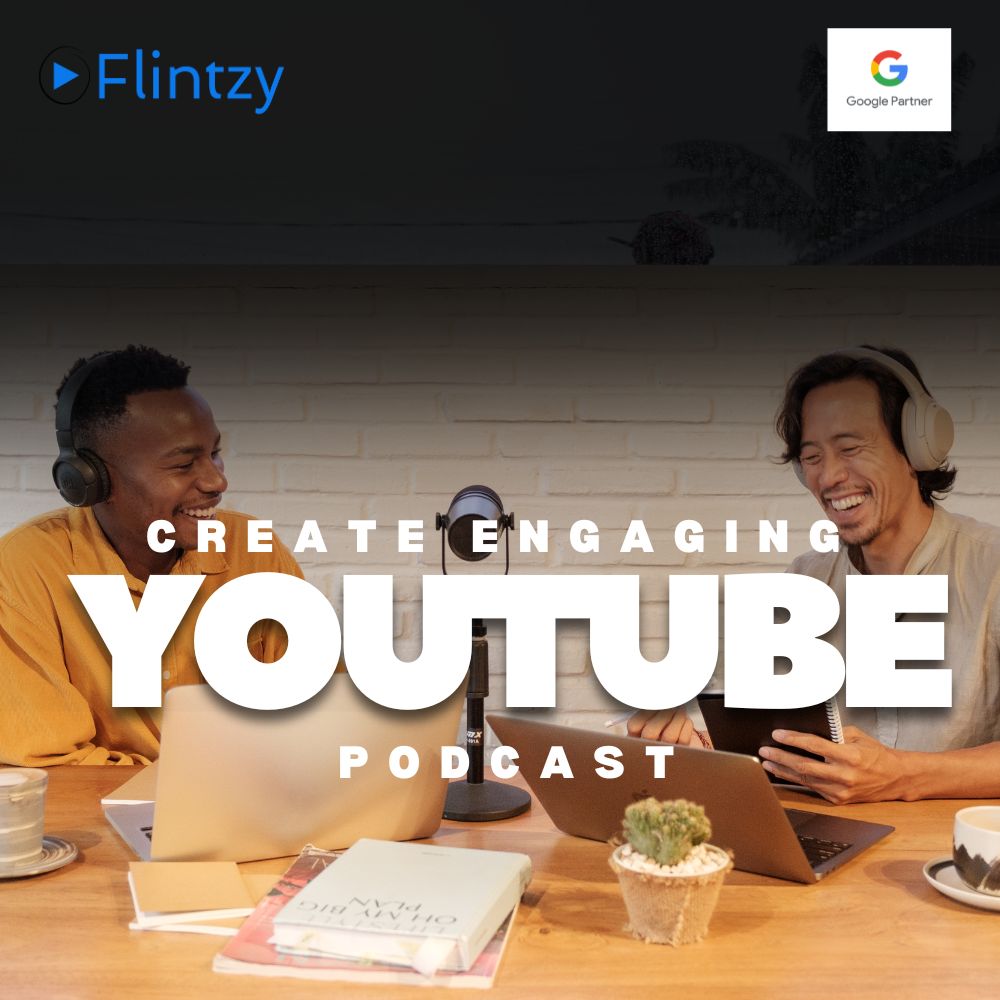Podcasts have seen a significant surge in popularity, becoming a go-to medium for a diverse range of content. Whether it’s true crime, personal development, or education, there’s a podcast for everyone. Their accessibility makes them a favourite. Whether you’re driving, working out, or just relaxing, podcasts allow you to learn, be entertained, or simply feel part of a conversation. The personal connection they create with listeners is a major draw, making the experience feel more intimate.
Even YouTube, known primarily for its video content, has embraced podcasting. This blog will guide you through seven essential steps to create a YouTube podcast that not only grabs attention but keeps your audience coming back for more.
1. Plan Your Podcast with Purpose
The first step to creating an engaging YouTube podcast is to plan it meticulously. Successful podcasts don’t happen by chance; they are built on a solid foundation of clear intentions and direction. Begin by defining the purpose of your podcast. Ask yourself, “Why am I creating this? What do I want my audience to gain from it?”
Choose a Niche: Your niche is the specific area or topic your podcast will focus on. Avoid the temptation to cover everything—focus on something that aligns with your passion and knowledge, and that resonates with your audience. For instance, if fitness is your area of expertise, your niche could be home workouts specifically tailored for busy professionals.
Understand Your Target Audience: Once you’ve defined your niche, think deeply about your ideal listener. Are they entrepreneurs, stay-at-home parents, or tech enthusiasts? Knowing who you’re speaking to will help shape the tone, content, and direction of your podcast, making it more relevant and engaging.
Outline Your Episodes: Plan your episodes in advance. This means deciding on the topic, structure, and flow for each episode. Think of your podcast as a narrative with clear segments. Consistency is key here—determine a regular release schedule that your audience can rely on, whether it’s weekly or bi-weekly, and stick to it. Consistent uploads create anticipation and establish a routine for your listeners.
2. Invest in Quality Equipment and Space Setup
Once your podcast is planned, it’s time to record, but it’s not just about pressing the “record” button. High-quality audio and video are critical for maintaining a professional appearance and keeping your audience engaged.
Cameras: Invest in a good-quality camera, ideally a DSLR or a high-definition webcam, to ensure your visuals are clear and sharp. Blurry or pixelated video can detract from your content and turn viewers away.
Microphones: Audio quality is equally important, if not more so. Even with excellent video quality, poor audio will cause your audience to lose interest. An external microphone, particularly a condenser mic, is a worthwhile investment as it picks up your voice clearly while minimizing background noise.
Lighting: Lighting can drastically improve the quality of your video. Natural light works wonders, but when recording indoors, consider using softbox lights or ring lights to ensure your face and surroundings are well-lit. Proper lighting adds a professional touch to your podcast and keeps the focus on you.
Soundproof Your Space: A quiet, distraction-free space is essential for recording. Background noise can ruin the listening experience, so choose a room that’s isolated from external sounds. Simple steps like closing windows and turning off fans can make a big difference. If possible, add soundproofing elements to your space to further reduce noise.
3. Capture Multiple Camera Angles
One effective way to keep your audience visually engaged is by using multiple camera angles. This approach brings a dynamic feel to your podcast and makes it visually appealing.
Set Up Different Cameras: Position several cameras at different angles. For example, use one camera for a wide shot that shows the entire room or group of participants, and another for close-up shots of individual speakers. Switching between these angles during editing keeps the visual content interesting and engaging.
Synchronize Your Cameras: Ensure that all your cameras are synchronized. They should start recording simultaneously, which will make editing easier and more efficient later on. With proper synchronization, switching between angles becomes seamless, enhancing the viewer’s experience.
4. Create an Enticing Backdrop
Your podcast’s backdrop is more than just a background—it plays a vital role in setting the tone and mood of your content. A well-thought-out backdrop can enhance your podcast’s identity and professionalism.
Choose a Suitable Backdrop: Select a backdrop that reflects your podcast’s theme. If your podcast centers on technology, a modern and minimalistic setup might suit you best. If it’s focused on art or creativity, consider a backdrop that showcases your work or features artistic elements.
Incorporate Branding: Include branded elements in your backdrop, such as your podcast’s logo, specific color schemes, or themed artwork. These elements make your podcast easily recognizable and help build your brand identity.
Avoid Clutter: A clean, simple backdrop is best. Avoid clutter or overly busy backgrounds, as these can distract viewers from the content. A neat and organized space enhances professionalism and keeps the focus on you and your message.
5. Infuse Your Podcast with Emotion
Beyond delivering information, podcasts are about creating connections, and one of the most powerful ways to connect with your audience is through emotion.
Express Yourself: Don’t be afraid to show your emotions during your podcast. Whether you’re excited, empathetic, or passionate, let your feelings come through naturally. This authenticity fosters a deeper connection with your listeners, making your content more relatable.
Use Storytelling: Stories are one of the most effective tools for evoking emotions. Share personal anecdotes, experiences, or relatable stories that tie into your podcast’s theme. For example, if your podcast is about overcoming adversity, sharing a personal story of resilience can resonate with your audience and make your message more impactful.
6. Include Media Elements to Add Depth
Incorporating media elements like images, video clips, and music can enhance your podcast, making it more engaging and memorable.
Use Relevant Media: Media elements should complement your content, not distract from it. For instance, if you’re discussing a product, include images or video clips to visually support your discussion. When talking about a particular event, consider adding relevant footage or photos to bring the topic to life.
Incorporate Music and Sound Effects: Music can set the tone for your podcast, while sound effects can emphasize key points. However, these elements should be used sparingly. Overusing music or sound effects can overwhelm your audience and detract from your message.
Ensure Seamless Integration: Media elements should be smoothly integrated into your podcast. They should enhance the content, providing additional context or emotion without overshadowing the primary message.
7. Edit for Precision and Flow
The editing process is where all your hard work comes together. This is your chance to refine your podcast, ensuring it looks and sounds professional.
Choose the Right Editing Software: Depending on your experience level, select editing software that suits your needs. Adobe Premiere Pro and Final Cut Pro offer advanced features for experienced users, while simpler tools like iMovie or Audacity can be excellent for beginners.
Trim and Adjust: During editing, trim unnecessary content, such as long pauses, off-topic discussions, or technical hiccups. Pay attention to the audio levels, ensuring consistent sound quality throughout the episode.
Add Transitions: Transitions between segments should be smooth, not jarring. Whether using a fade-in, fade-out, or a simple cut, transitions help maintain the flow of your podcast and keep the audience engaged.
Be Precise: Precision is key in editing. Small mistakes can be noticeable and detract from the professionalism of your podcast. Carefully review your cuts, transitions, and audio adjustments to ensure everything is seamless.
Creating an engaging YouTube podcast requires careful planning, attention to detail, and a commitment to quality. By following these steps, you can produce a podcast that captures attention and builds a loyal audience. Consistency is crucial—regularly share valuable content, and over time, you’ll create a community of engaged listeners. So, start your podcasting journey today and make your mark in the exciting world of video podcasting.

